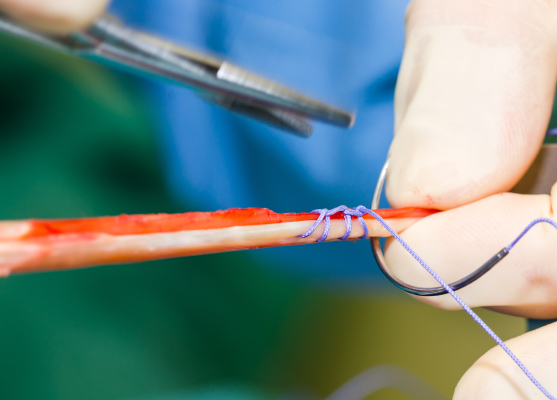Better for you
Sarah Keenihan discovers how health, improved data integration and innovative manufacturing are making Australians healthier.
COVID-19 has accelerated Australia’s demand for digital health delivery. But even before this change, Professor Tim Shaw was pressing for greater integration of everyday technologies into healthcare. ….
New materials for knee repair
It’s not just data that can transform Australia’s health: new materials are also in development. Orthopaedic care is a good example, where clinicians seek effective solutions to fix faulty bones and joints. Torn or ruptured ligaments are a big part of this problem. Orthopaedic surgeon Nick Hartnell estimates a global annual market of around $14 billion for replacement parts, taking into account procedures to knees, shoulders and ankles. Hartnell devised a uniquely Australian solution: kangaroo tendons.
As head of startup Bone Ligament Tendon Pty Ltd, he’s working as part of a $6.9 million Innovative Manufacturing CRC (IMCRC) project to explore the viability of roo tendons to form donor ligaments in human patients. Allegra Orthopaedics and the University of Sydney are also partners.
“It could be as fast as two to three years to get to market,” says Hartnell. “We’re making really good progress already.” In Australia, rates of surgical reconstruction of the anterior cruciate ligament (ACL) — a fibrous band that stabilizes the knee joint — have increased during the past decade.
“There’s no question the numbers of operations are going up, and more of them are in young patients and women,” says Hartnell. He says the standard approach for ACL repair is to take a piece of tendon from another part of the human body — usually the hamstring — and replace the faulty one within the knee. But ligament failure is quite common using this method. Enter kangaroo tendon, which is strong, long and easily available.
“We collect tendons from animals that have already been culled for the human and pet meat markets,” says Hartnell. The tendons are then treated in the lab to prepare for insertion. To counter the risk of detachment from the bone, replacement roo ligaments are to be secured within recipient knees using 3D -printed ceramic biodegradable screws.
“The patient’s own bone grows into the screws, and the original materials dissolve away over time,” explains David Chuter, CEO and Managing Director at IMCRC. There’s lots of interest in the commercialisation of these screws for other orthopaedic uses as well.” It’s a good example of how an innovation can have benefits beyond what it was originally designed for. “Patients, the healthcare system, state governments and even insurance companies may all see the benefits of this innovation in the long run,” says Chuter. Manufacturing like this is rapidly moving towards being an enabler for many industries.”
You never know where technology will take you.

